* To find out more about an UX & UI design project based on this research: please click here.
Dates: Jan - Sep, 2019
My roles: Design Research; Co-design; Strategic Design, Graphic and Visualization
Skills and tools: Field Research (Site visits, semi-structured interviews, participant observation, survey);
Co-design workshop (design games & facilitation); Prototype(Storyline sketching, storytelling prototyping, evaluation forms).
Master Thesis
Allotment gardens, Siirtolapuutarha in Finnish, are places with a parcel of land for gardening or planting with a small cottage on them. Originally established due to the food shortage during wartime in the last century, allotment gardens have developed a long and continuous history and tradition. Nowadays, as one important type of urban gardening, there are enormous values in allotment gardens for individuals as well as for the city.
The Challenge
With the growing interests of allotment gardening, the associations and many gardeners started to consider the inclusiveness of allotment gardens in a wider community. In the year 2026, the lease of the land for allotment gardens with the city has to be renewed. Although it is not likely that the lease will be terminated, it is about time to propose a new way of operating allotment gardens. With the younger generation and the wider community, what should be kept and what could be changed for the future allotment garden?
Research Questions
1) Which strategy should allotment garden adopt in 2030 when considering the need of a wider community?
2) How can the practice of allotment gardening be changed through co-design to fit into the future?
Approach and the Process
The thesis project aims to apply the tools and methods of co-design to explore an innovative future of allotment gardening by researching on practices of two types of urban gardening, allotment gardening and community gardening. There are two main parts of this project, learning to know and making it happens.
To gain insights on allotment gardening, multiple research methods, including site visiting, interviews, survey and participant observation were utilized in different stages and with different types of target groups during the research stage. To examine the practice of co-design, workshops and prototypes were conducted to generate and to modify concepts together with target groups. As it is a co-design project with participants, from planning to implementation, the progress direction is always adjusting along with the learnings I got and interactions I encountered with people.
Glimpse in the Process
In the field
As a researcher with very little experience in urban gardening, this stage provided me a good chance to learn by being engaged in their community, discover by communicating with gardeners and participating in their activities.
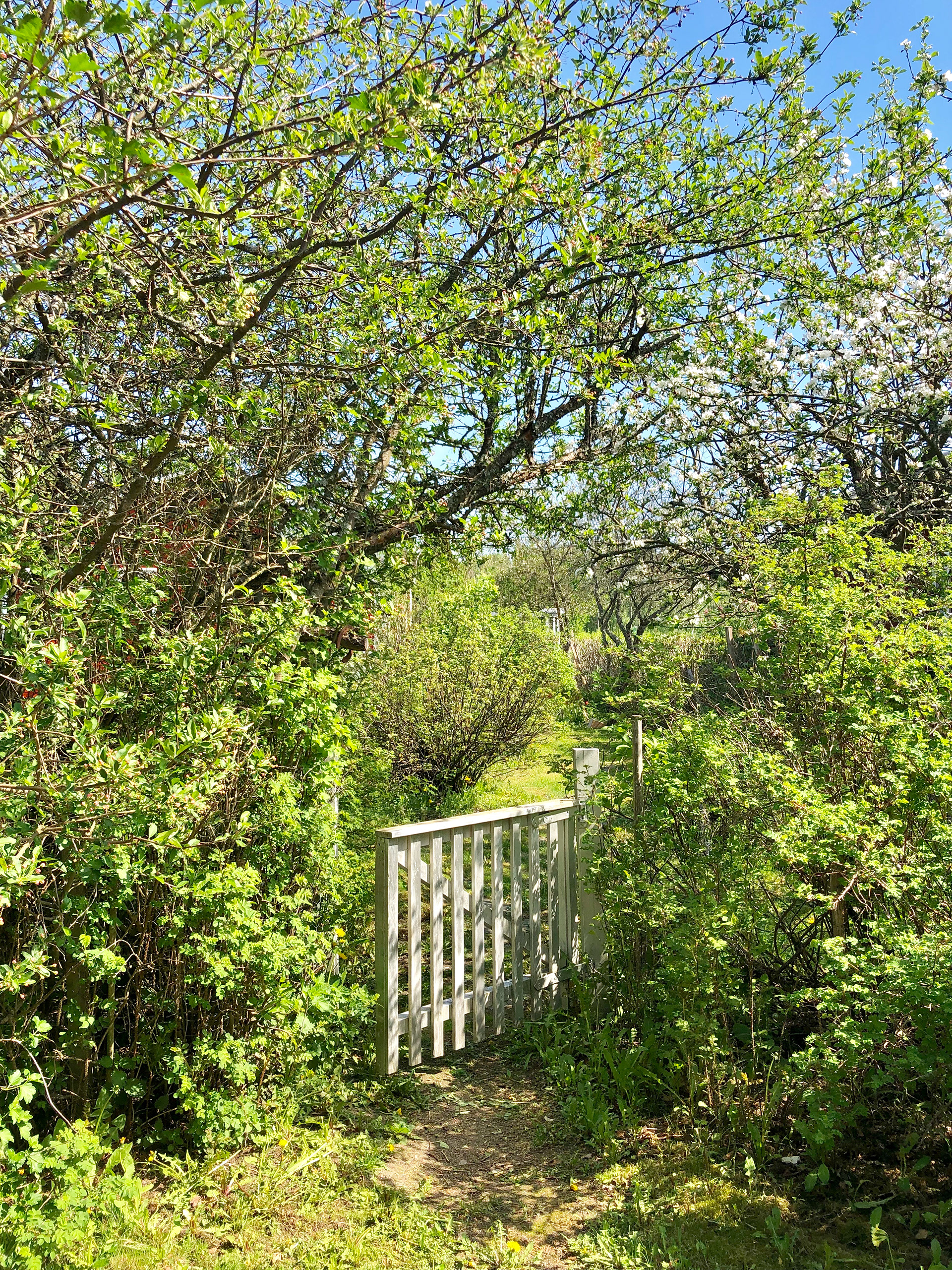
Private yards in allotment gardens.
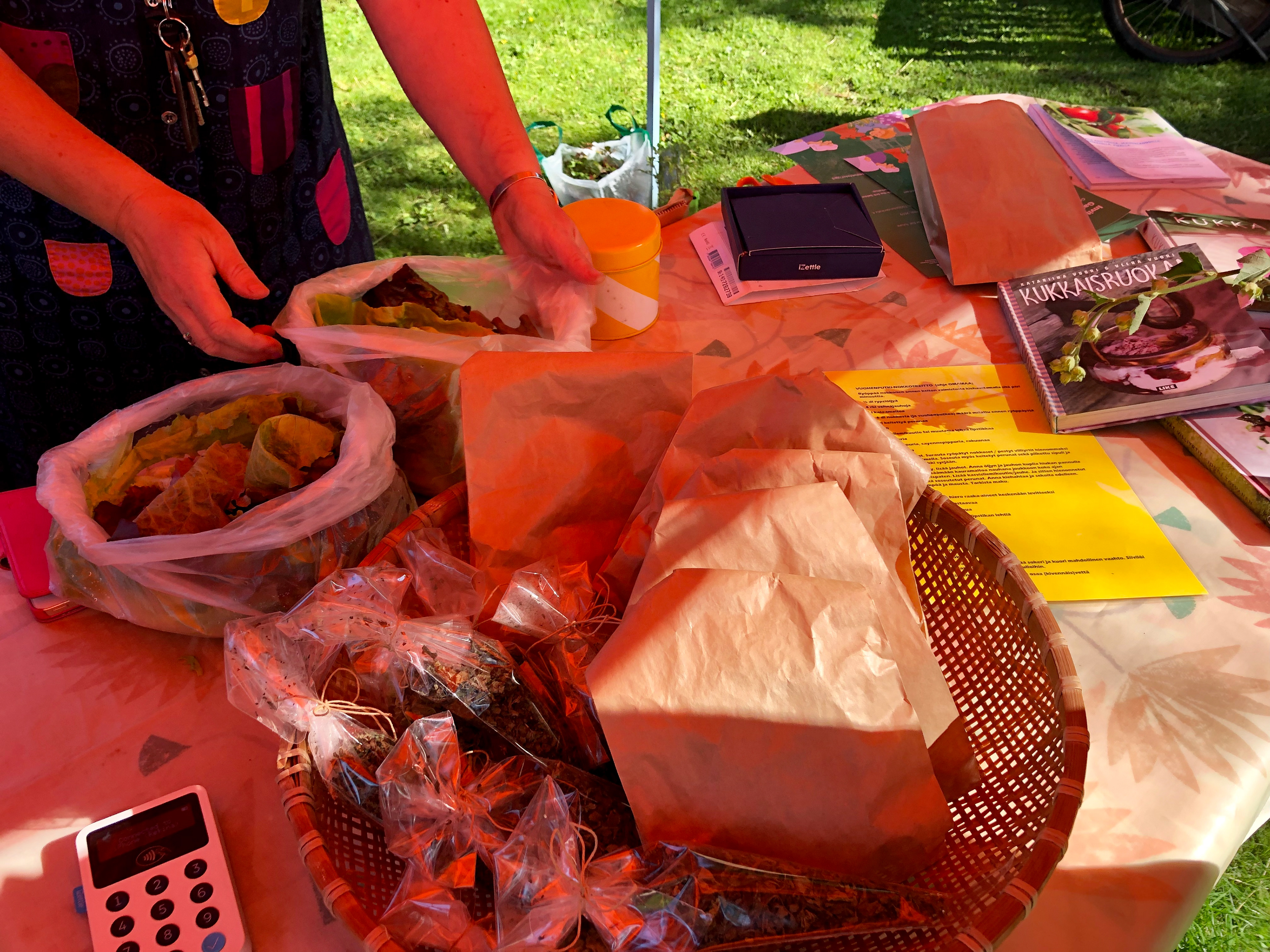
Organic food on sale every weekends during summer.
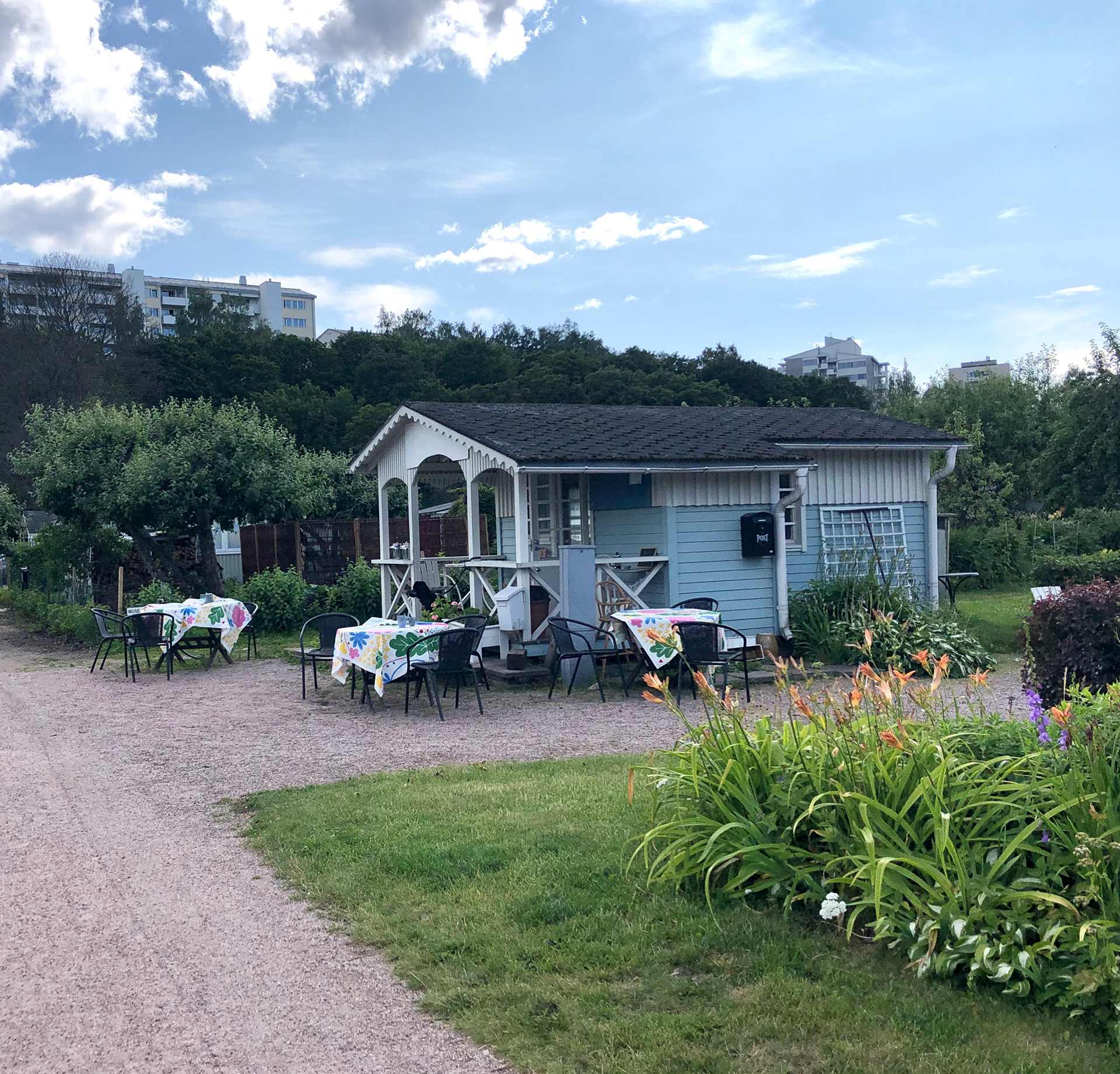
The garden Cafe in Vallilan Allotment Garden.
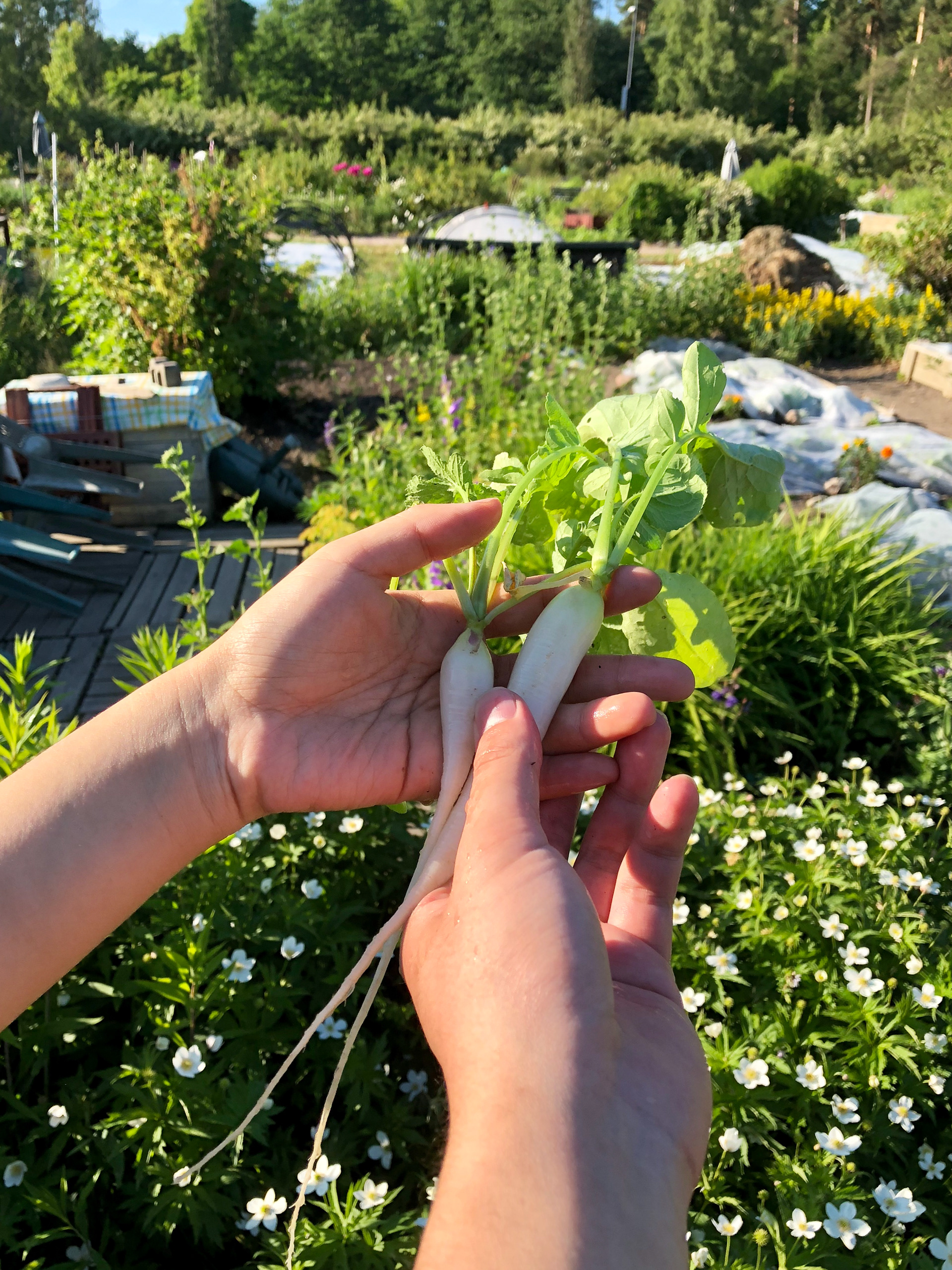
Peer learning in the community garden.
The co-design workshop
According to the insights from data analysis, two aims of the workshop are defined as listed: 1) to build a common understanding of allotment gardening and its values; 2) to bring up ideas and options for envisioning allotment gardening in 10 years. To achieve the aims, there are two design games demonstrated with supportive design materials for participants to co-create with: a) Group definitions of 'allotment gardening' & Impressions of allotment gardening TODAY; b) Persona creating & scenarios making for future allotment gardens.
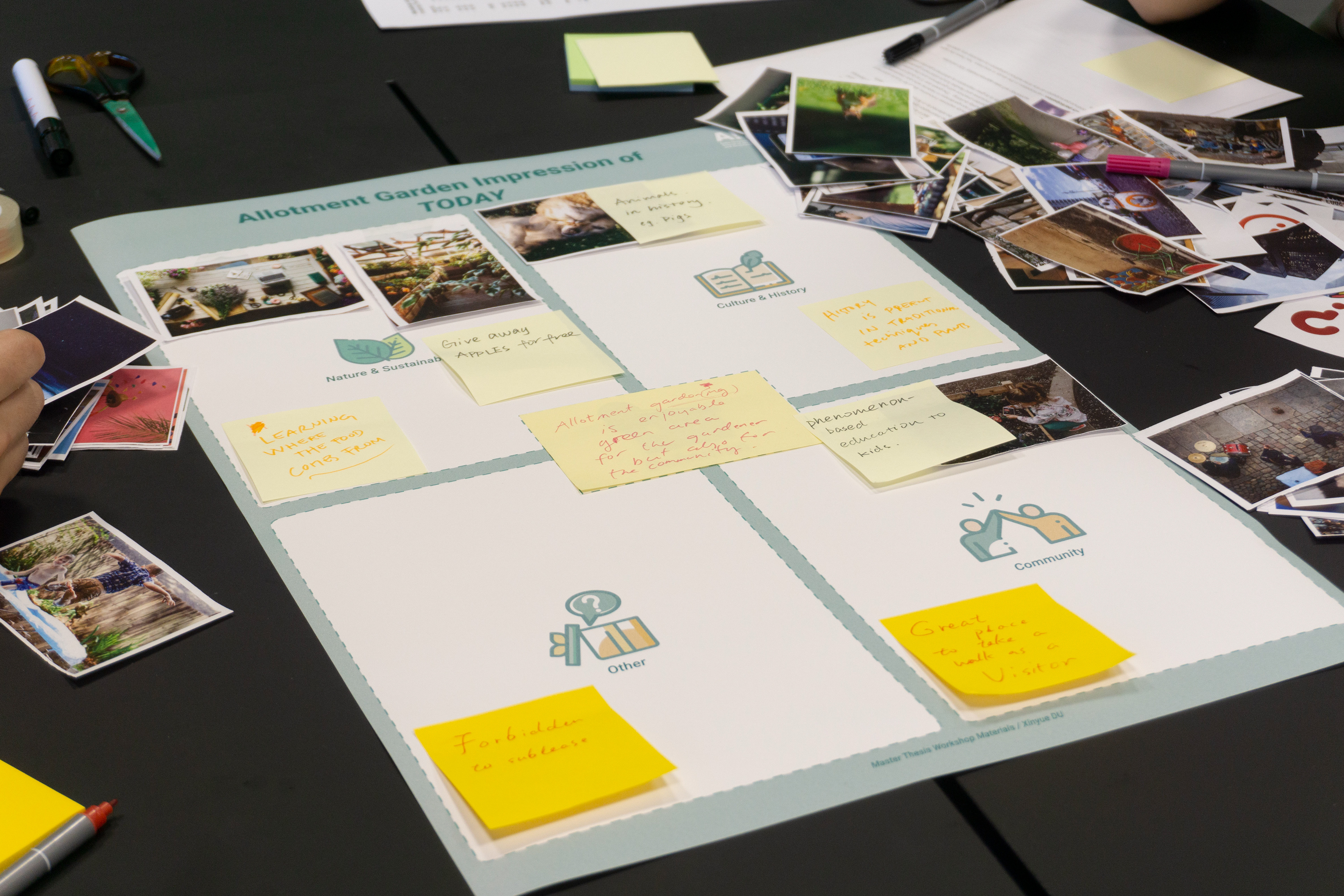
Making poster with sticky notes and Images.

Sharing poster ideas with the other group.

Persona ideas sharing.

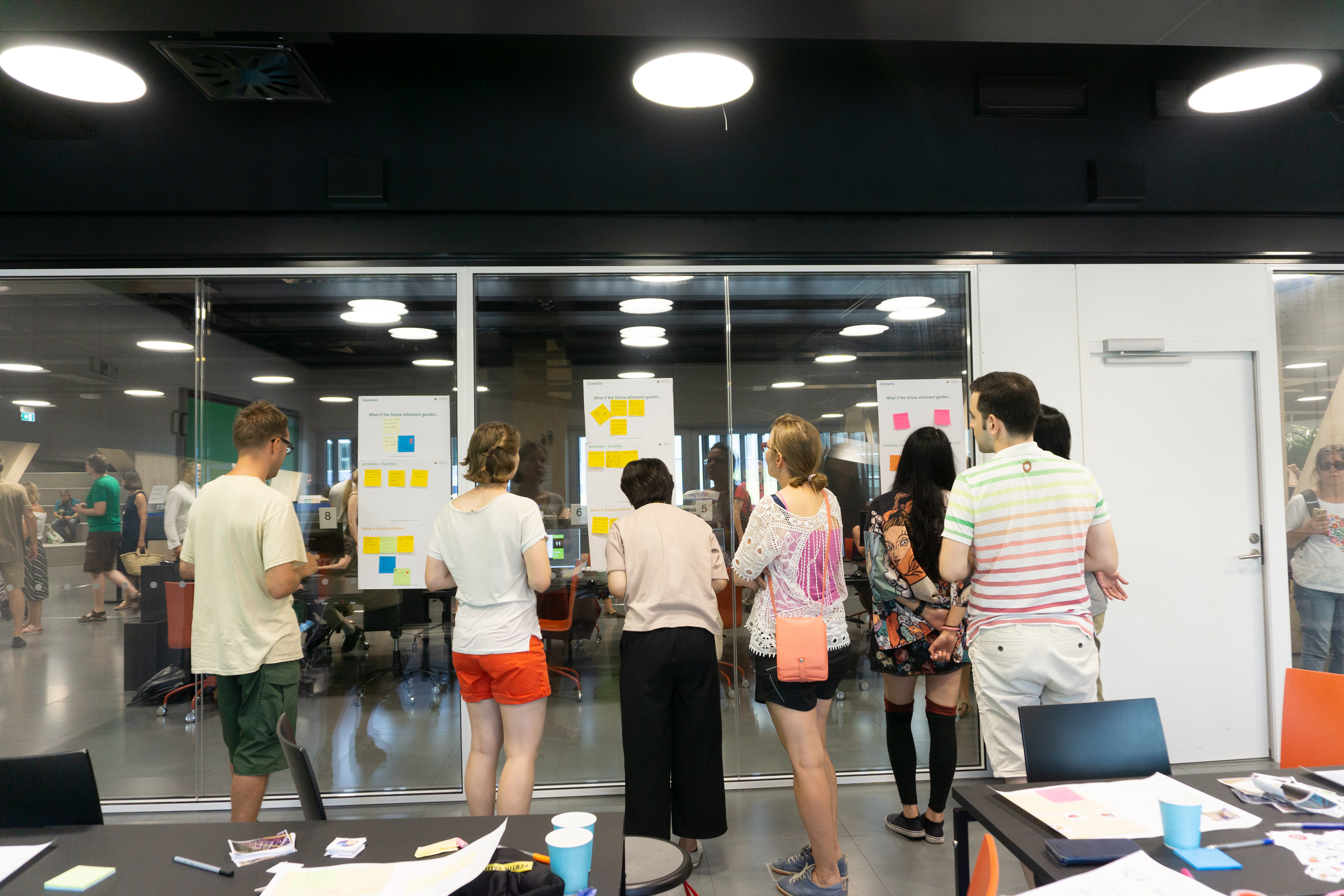
Idea voting section for the scenarios.
The workshop opened the door for the garden associations to involve the wider community by knowledge transferring. The scenarios generated by gardeners and non-gardeners were pointing to a shared and open future. This can be considered as a hint for garden associations in strategy making.
Concept development
Level of Support in Target Groups
Passive opponents - elder gardeners Neutral - gardeners
Neutral - wider community
Passive supporters - garden associations
Active supporters - younger gardeners and the young wider community
Passive opponents - elder gardeners Neutral - gardeners
Neutral - wider community
Passive supporters - garden associations
Active supporters - younger gardeners and the young wider community
Level of intensity of concept innovation
1. Secret Box
2. Allotment Garden Walk-through
3. Allotment Garden Association Platform
4. Rentable Garden Business
5. Shared Ownership
6. Badge-credit System
7. Allotment Garden Pop-up Movement
8. Other breakthrough concepts that come from the movement
2. Allotment Garden Walk-through
3. Allotment Garden Association Platform
4. Rentable Garden Business
5. Shared Ownership
6. Badge-credit System
7. Allotment Garden Pop-up Movement
8. Other breakthrough concepts that come from the movement
Storytelling prototypes
There were 4 concepts I selected to develop further for prototype making. Since the four models of allotment gardens are in a rather abstract strategic level, making scenario storylines were the method I used to conduct prototypes for evaluation.
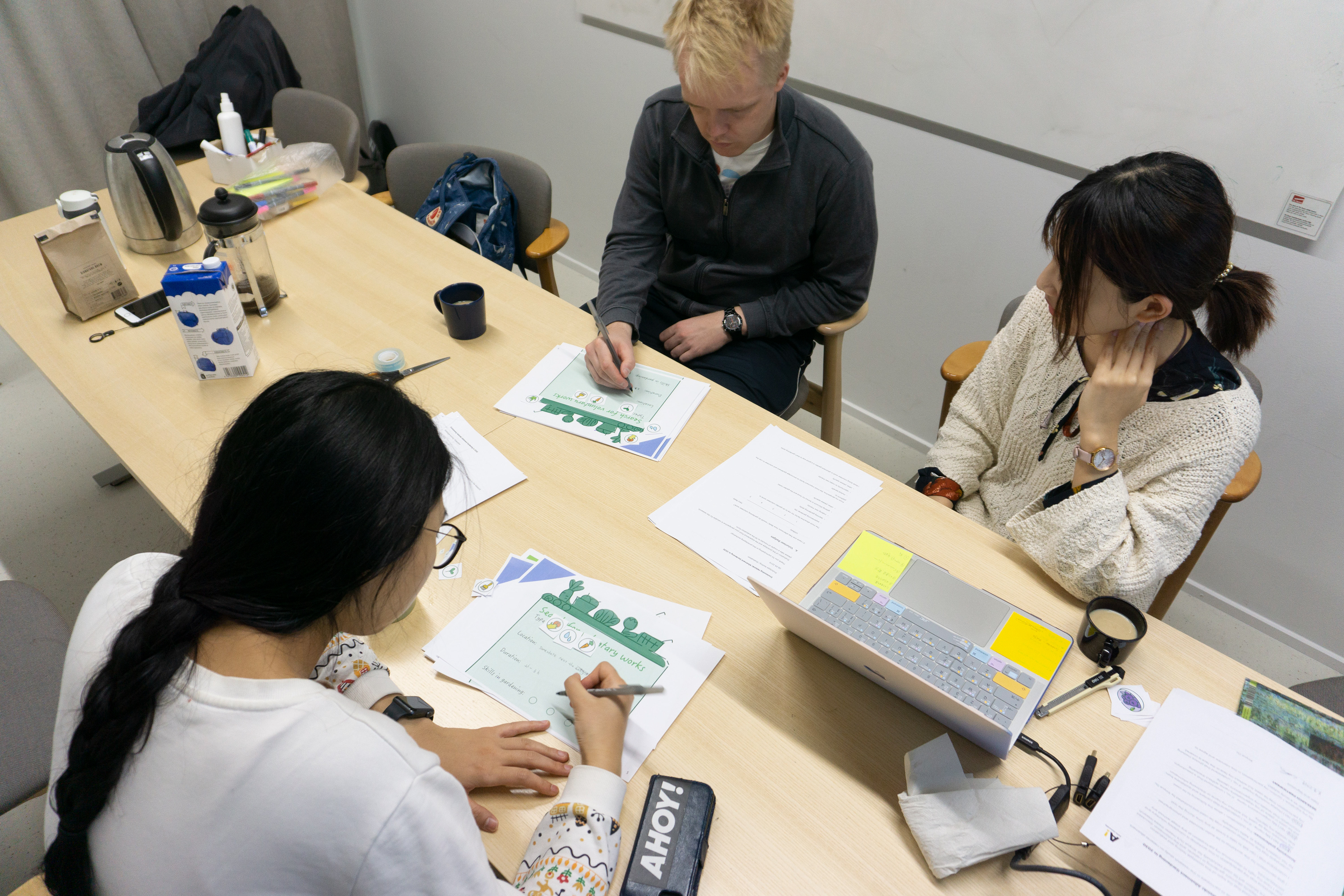
Prototype testing with participants from the workshop.
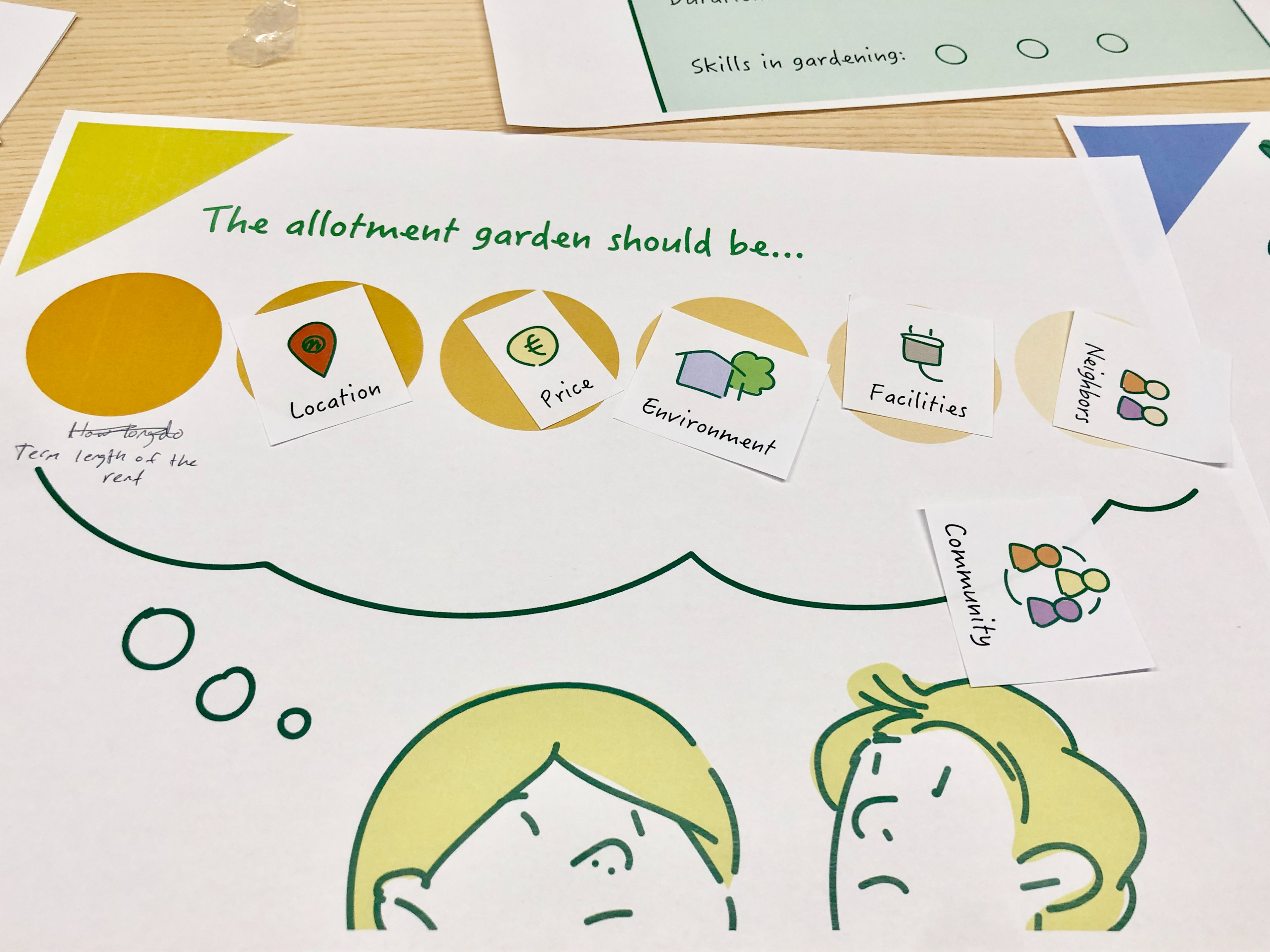
Options to choose in some key steps of the scenarios.
The Proposal
Stakeholders typology
When promoting social change, it is important to have a comprehensive understanding of group dynamics. In the allotment garden context, there are groups in different active levels from both allotment gardens and the wider community. To direct towards an inclusive future, target groups in allotment garden movement are categorized and mapped out with their typical behaviors.
5-step Action Plan
Strategy Roadmap
This is a practice-oriented research project, and therefore the process of conducting this thesis for me is also a process of learning and practicing co-design method. The thesis contributes to identifying and promoting social change through co-design. Involving group participation to solve the problem and envision the future together provides an example of co-design practicality in dealing with social and organizational change. In future work, co-design strategy can be utilized as a guideline for social change project.
Due to the fact that the outcomes are based on research in Helsinki area, the scalability of the strategy requires a specific evaluation with the local situation. Government and decision makers should be engaged to ensure the practicality.
* To find out more about an UX & UI design project based on this research: please click here.


